In this interview with PaintTube.TV’s Art Notes, Amery Bohling explains the importance (and joys) of working from life, composing a scene, creating scale, and more.
Amery Bohling (featured in the video workshop “How to Paint the Grand Canyon”) is a full-time artist based in Scottsdale, Arizona, where she owns Amery Bohling Fine Art Studio/Gallery. Recognized as a skilled artist, she vividly portrays the enduring strength of the West’s landscapes while skillfully capturing its light.
She is most widely known for her vibrant, straightforward paintings of the Grand Canyon, and her work is a combination of Old World and New West. Providing a contemporary perspective on traditional Western landscapes, Bohling often features local life within the landscape. Amery’s appreciation for the environment comes, she says, from “a desire to paint the landscape in its natural state and to preserve these beautiful locations for others to enjoy and future artists to visit.”
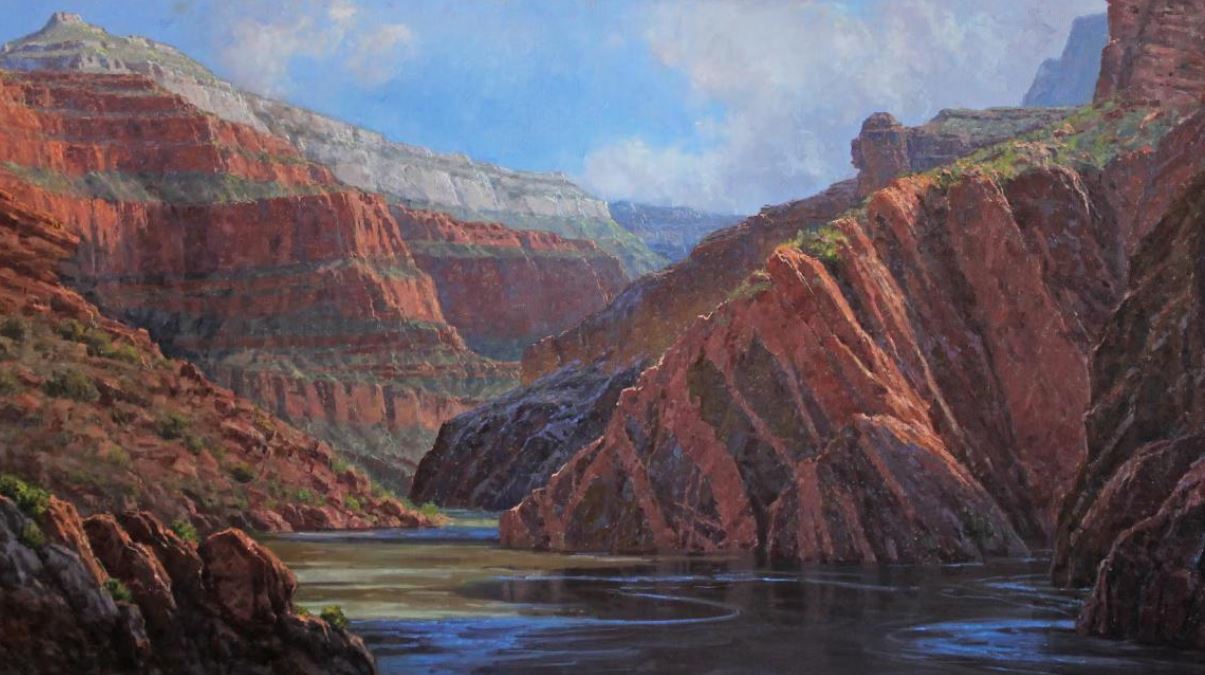
PaintTube.TV: What does the landscape give you as an artist?
I enjoy travel, a bit of adventure, and being outdoors. Painting is the best way for me to do all of those things and take the time to just be there and study it. I enjoy it immensely. Work has taken me to some of the world’s most beautiful and remote locations. I get to paint that moment of being there and bring it to a gallery for others to enjoy. A painting is more than just a photo of a special place. It’s the feeling and the memory of being there.
PaintTube.TV: Could you walk us through your process? What do you need to have figured out at each stage?
My process for painting has changed over the years. I adapt my approach to overcome whatever handicaps I may have. Once upon a time, I was having a hard time “finishing” my work. After blocking it in, I was over it and wanted to move on to a new project. To help with that, I started painting in patches. Once I finished an area, I would move on to an adjacent section. Slowly, the canvas would be covered. The big blank spots stopped me from feeling finished. This was helpful for a time, but eventually it held me back, so I changed things up a bit.
I always begin with a sketch, and if I am in the studio, I will make a small color study as well. This helps me to understand the subject, or whether to paint it at all. In my current method I will draw my study onto the canvas in charcoal. Next, it’s more inspired chaos than my earlier approach to painting. I do this by creating an underpainting in acrylic. Drips, dabs, layers, and all the good stuff you can do with that medium. That moment of being loose and relaxed inspires the direction for the rest of my painting. This is when I switch to oil paints. The oil medium is amazing to work with to add atmosphere and pops of color.
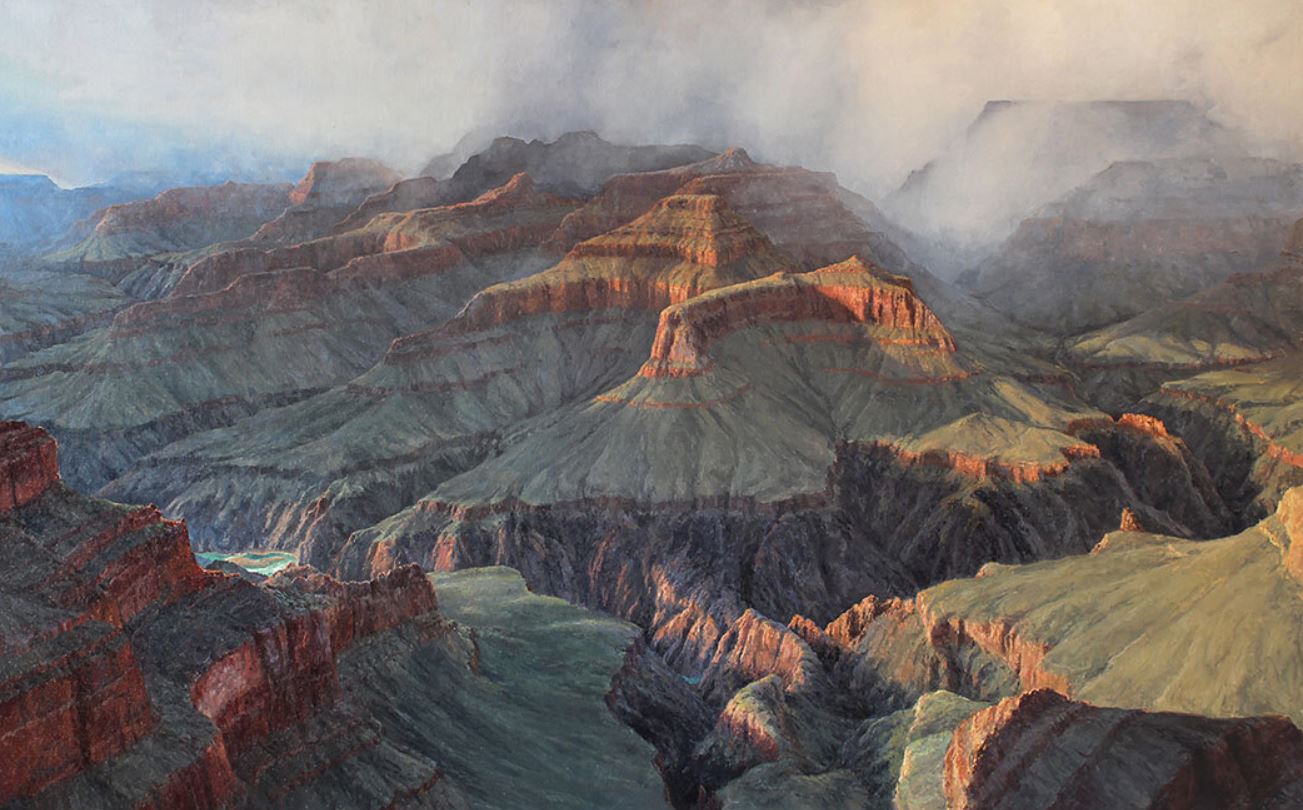
PaintTube.TV: Do you think it’s important to work from life? Why?
Working from life is vital. It is so, so important. Yes, it is easy to hang in the studio and paint from photos, but you are missing a big part of the story. Photos cannot grasp the colors you see in person. They also do not have the ability to create the inspired painting moment that only standing on the edge of the Grand Canyon can do. The feeling of scale, the bugs in your paint, and the wind in your hair. This comes out in your work.
PaintTube.TV: What are the biggest challenges you see with students working from photographs? How do you fix those?
Mostly what I mentioned earlier: photos miss the landscape’s soul. You can also pick out a non-plein air painter* by how they present the shadows and lights. They tend to be painted too dark and black in the shadows and washed out in the light. The beautiful colors inside shadows and lights can only be seen in person. This makes for a challenge when you are teaching a “Painting from a Photo” workshop.
A couple of things I do to help are to visually show the difference between a photo and a real life subject, and I also like to bring in my own photos in for students to work from. I edit the shadows and lights in Photoshop to better match what was actually happening outdoors. This can make for a bit of computer time, but it really helps. You also need to be clear that working from photos is best when working with a matching outdoor sketch. The two together can make for a wonderful studio work.
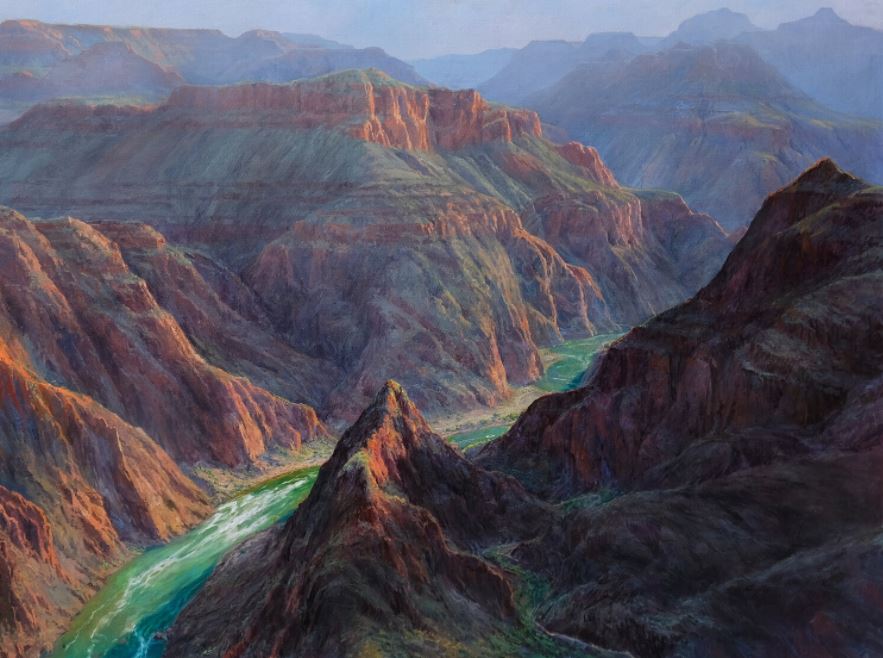
PaintTube.TV: How do you compose a scene? What questions are you asking yourself when figuring out a composition?
I begin composing by doing small pencil sketches. I may go through a few before I feel I have a good one. Sometimes they can look pretty different from the actual thing I am painting. Don’t be shy about moving a tree or two; this is your painting, you are not beholden to the landscape. This is also the time I check to avoid objects of equal size or spacing, and to prevent awkward tension points.
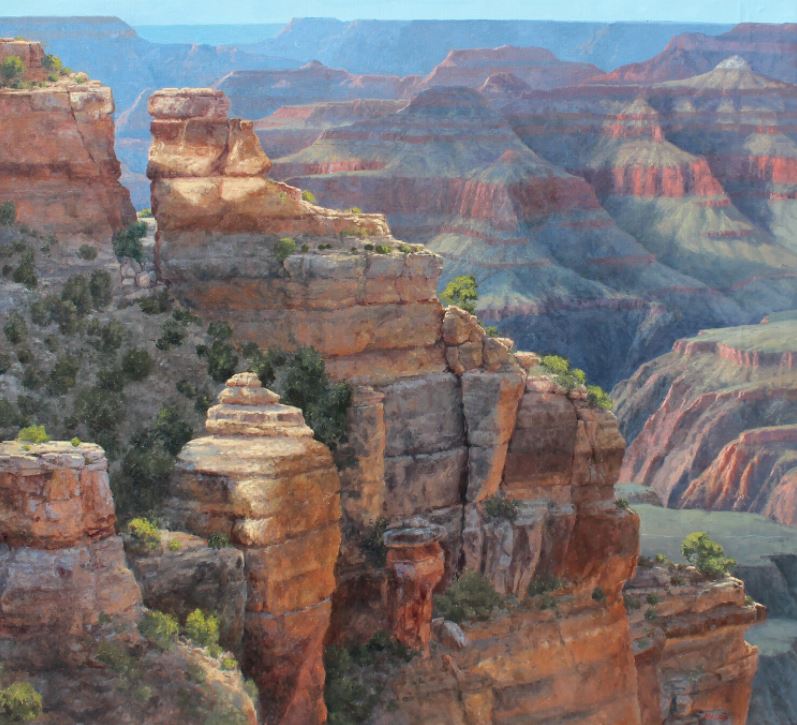
PaintTube.TV: You have spent a great deal of time painting the Grand Canyon. What is the power of spending time and getting to know a subject really well?
The first time you paint in a new location, like the Canyon, it can be intense. You are not familiar with how the light works at any time of day, or how the rock formations connect in their own perspectives. The Grand Canyon is complicated. To top it off, you only have two hours or so to paint it.
Memory is your lifeline. Once you paint and and draw it over and over, you begin to commit the landscape’s key properties to memory. Now I have an idea of what happens to Kaibab Limestone when the sun sets and rises. I know how the Super Group winds its way around Isis. This makes it possible to paint efficiently so that less vital plein air time is spent trying to figure out what the heck is going on.
PaintTube.TV: When you want to create a sense of scale, what’s important to remember from a color and value standpoint?
With scale, the easiest thing to do is paint a tiny person into your painting. Or use value and color. I like to keep my saturated colors in front, and wash out my distant hues. If your rock in the foreground has the same color and value as your rock that is miles away, it will fail to read. The viewer will never see it as a rock in the distance. You have to fade out that distant object.
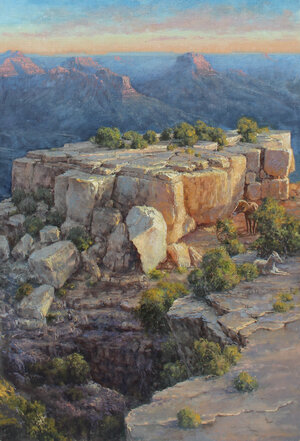
*Poll: Can you tell if a painting is plein air or studio? Share your comments with us below!
Learn more about how Amery Bohling works in her videos “How to Paint the Grand Canyon” and “Seascape Painting Secrets.”
Visit EricRhoads.com to find out all the amazing opportunities for artists through Streamline Publishing, including:
– Online art conferences such as Plein Air Live
– New video workshops for artists
– Incredible art retreats
– Educational and fun art conventions, and much more.
> Subscribe to Plein Air Today, a free newsletter for artists
> Subscribe to Plein Air Magazine so you never miss an issue

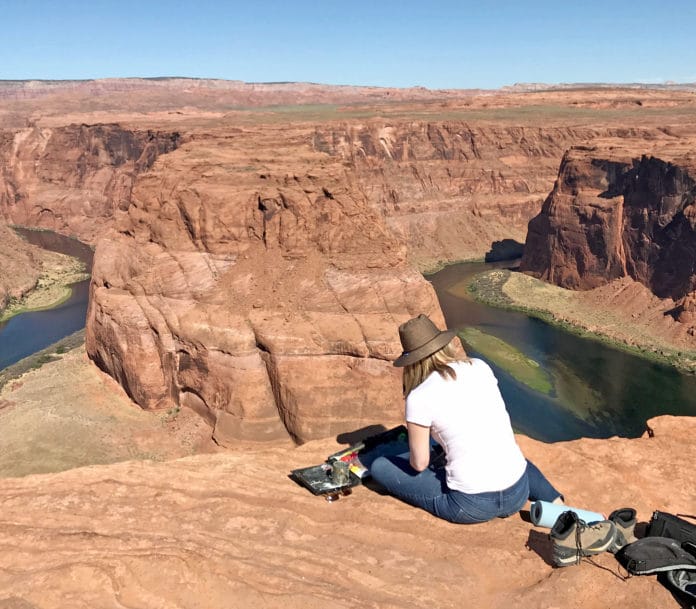

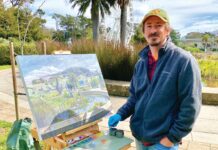
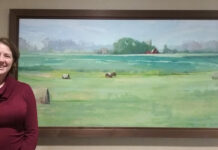
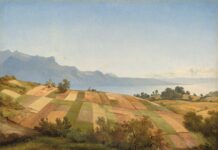
I don’t think it matters to the audience whether you paint from a photograph or plain air. If your viewer is drawn to your painting for whatever reason then you have accomplished the goal of an artist. Plein air versus photographs only matters to artists. If you are dissatisfied with your own work from photos then you might consider Plein air painting. Again, in the end, the eye of the beholder is your ultimate judge.